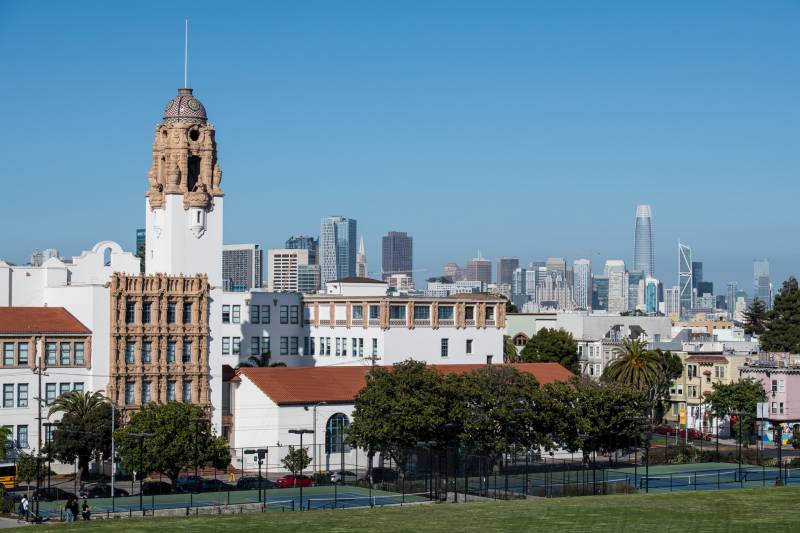"[W]e know that in San Francisco as well as in surrounding counties, the families and communities who are hardest hit by COVID — namely Black and brown communities — are seeing much higher rates [than] the rest of the neighborhoods and communities," Solomon said. "And we are emphasizing a lower community spread [before returning to schools] so that we can mitigate the effects of people being together who are in multigenerational households, who are experiencing ... higher rates of COVID."
Tara Ramos, a teacher-librarian at Sanchez Elementary School who has a 7-year-old daughter in a San Francisco school, says pointing to private school reopenings as a reason for public schools to follow suit is illogical.
"Students from private schools are not coming from communities where [coronavirus] spread is so high," she said.
But as the pandemic has dragged on, with little sign that children will see the inside of a classroom this school year, many parents have reached the end of their tether. The group Open Schools California has united parents from San Diego to Davis in an attempt to pressure stakeholders who have the power to take action to pull the trigger on reopening.
“After 11 months of school closures and a lack of political will from some state and local leaders to do what's best for school children, it is encouraging to see the City of San Francisco acknowledge the science and stand up for what's right and what we've known all along," said Megan Bacigalupi, an organizer with the group, in a statement responding to the lawsuit. "That schools can be reopened safely for students and teachers."
Tia Ghose, a journalist who lives in San Francisco's Castro neighborhood, says her two children have struggled with online learning. She and her husband recently pulled their third-grader out of public school and are now paying for in-person learning at a private school.
"The schools needed to be reopened yesterday," Ghose said.
She's not alone among Bay Area parents in reporting their kids struggling with going to school only online.
"We see high levels of anxiety,” Saun-Toy Trotter, a psychotherapist at UCSF Benioff Children's Hospital in Oakland, told KQED in November. “High levels of depression.”
Her school-based clinic recorded more youth suicide attempts in the first four weeks of the pandemic than it did in the entire previous year, she said.
But not every parent agrees that a return to in-person instruction is a no-brainer. On Forum, Solomon pointed to an SFUSD survey that found relatively more Black and brown parents reporting they don't feel safe sending their kids back into classrooms.
That dynamic is playing out in other communities with high coronavirus transmission rates. Pecolia Manigo, a parent of three OUSD students and executive director of the Bay Area Parent Action Leadership Network, told KQED recently that many parents who are pushing for schools to reopen have not felt the effect of the pandemic the way that communities of color have.
"It's not in their families, is not in their neighborhood," said Manigo, who is Black. "It's an amorphous kind of idea and a threat. It's not even seen as a potential threat ... We are hearing families testing positive every week. And so it just feels different for us."
Rafael Moreno, a "third-generation-deep" Mission District native with a 5-year-old daughter attending elementary school in the neighborhood, said that schools need to bring kids back, "but they need to open when it’s safe for our students, our teachers and our community members. And that means vaccines for teachers and the support staff who make up the school community."
Figuring out different plans for students of diverse needs, including impoverished students and those with disabilities, can be "extremely resource-consuming," said Megan Caluza, a behavior analyst for SFUSD. One of the handful of educators on the district's working group on reopening, she says resumption of in-person learning requires more planning than people might realize.

